Lydia Gilbert's Ancestors |
Click on a name for info, click on an arrow to follow that branch, click Home to go to the main page, or click for an Alphabetic List of all Names. |
 |
| Note: Before 1752 the year began on March 25th. Dates between January 1st and March 24th were at the end of the year, not the beginning. |
“The increasing power of the white men, and their aggressive policy, excited their jealousy, which was manifested by murders, firings, and all cruelties, of Indian revenge. Such were the state of affairs when the colony availed itself of Gilbert's services in perilous negotiations with these enraged, crafty and faithless savages. None but a resolute man, of a cool, penetrating eye, a wary watchfulness, and a fearless temper, could gain respect or safety among them. Uncas, like King Philip, was a patriot, and a settled hatred to his new neighbors fired his heart and mind, and filled the breasts of his people.” In about 1646, Thomas Stanton, the first marshal of the colony, left Hartford and a successor was needed. On April 9, 1646, the General Court passed the following order (printed in the Colonial Records of Connecticut Vol. 1, on page 139): “Whereas Thos Steynton by his long absence is disabled to attend the Court according to his place, it is now ordered his sallery shall cease and Jonathan Gilbert is chosen to supply the place for this yeare and the Cort will attend him with reasonable satisfaction.” The job of marshal was a constable or high sheriff who carried out the orders and decrees in both civil and criminal cases of the General Court or Colony government and possibly the orders of the lower or Particular Court as well. There is no mention of his re-election annually, but there are records of his appointment as Marshal in 1662, 1663 and 1664. His successor was elected May 11, 1675. Thus we may assume that Gilbert served in this office for 29 years. Evidence indicates that the marshal had, either in person or by deputy, the powers and duties of the hangman. No other mode of execution in recognized by the law of the Colony. This power brought Jonathan Gilbert into the witchcraft case which involved his brother Thomas’ wife Lydia, who was hung as a witch in 1654. However, it is not certain that he held the office of marshal at that time.
Jonathan and Mary lived in a small house on a lot near the corner of the present Sheldon and Governor Streets in Hartford, which he bought in 1648/49. It was near the house of his father-in-law. They had two children together born in Hartford – Jonathan born on May 11, 1648, and Mary on December 15, 1649. Jonathan’s wife Mary died on December 16, 1649, probably from complications during the birth of daughter Mary. Almost a year later in November of 1650, Jonathan married ancestor Mary Wells and they had at least eight children together (see Mary’s bio for details on the children). Jonathan acquired many parcels of land in different parts of the town. In less than twenty years he had secured a firm position in the town and colony, at the very center of its commercial, social, and political life. His second marriage to Mary Wells had without a doubt helped him. From this period also began Jonathan’s participation in public affairs. Prior to this time he had been known as Goodman Gilbert, but now was called Jonathan Gilbert, Mr. Jonathan Gilbert and Mr. Gilbert in the records, a sure indication of advancing official and social status. According to the Records of The Particular Court of Connecticut, 1639-1663, on February 20 1650/51 “Jonathan Gillburt is Chosen and sworne Clerke of the trained Band in Hartford for the yeare ensuing.” On May 14, 1651 “Johnathan Gillburt is apponted by the Courte to goe to Wetherseild and gather vp the seuerall Sums of mony, of those men whose Cattle did Jointe Damages with Thomas Ossmores, according to the distribution of the whole damage made formerly by the Courte, together with his Just fees and Charges in and about the same, and if any whome it Concerns refuse to pay him, hee is to warne them to appeare at the next perticular Courte in Hartford to Answer the same.”
As you can see, Jonathan is frequently referred to in the Colonial Records of Connecticut, which documented his public life. In March, 1653, a special warrant was granted to him as marshal, with the power to enroll as many forces as he sees fit, to arrest or repel rebellious indians. April 9, 1657, Jonathan, his half brother John, and “an able man” provided by the “Deputies of Windzor”, were instructed by the court to go to Nortwootuck and Pacumtuck and discuss with the Sachem and chief, the recent acts of murder committed by indians at Farmington, CT, and that in the future any indians committing such acts would be considered enemies, and would be prosecuted. Then on March 6, 1653/4, there is a special warrant to Jonathan Gilbert to arrest Thomas Baxter for his misdemeanors and Jonathan to have power “to rayse such considerable forces as hee sees meete to execute his warrant.” In 1656, Jonathan Gilbert and his half brother John Gilbert desired a grant of land in what is now Westfield, Massachusetts, but neither of them complied with the terms of the grant “so far as to settle there,” and the land was forfeited to Captain Pynchon, Robert Ashley and George Colton. On April 9, 1657, “Jonathan and John Gilbert to go with others to the sachem at Norwootuck and Pacumtuck to tell him of the horrible, bloody acts of some Indians at Farmington.” J. Hammond Trumbull’s book The Memorial History of Hartford County, Connecticut, 1633-1884 Vol. 1, lists Jonathan as being part of the first cavalry in Connecticut in 1658. It was a thirty-seven member troop of horse soldiers created by and under the command of Major John Mason, then the highest military officer in the colony. By March 9, 1658/9, all wines and liquors entering the Colony had to be taxed. Jonathan’s warehouse speedily became a bonded warehouse for imports into the Colony and he became, as records show, the collector of the port. He was appointed to see the entry and recording of these taxes at Hartford. “Such persons to pay 2 shillings for every Butt of Wine and 12 pence for every anchor of liquors.” Anchor, more correctly anker, was a measure for liquids, nine or ten gallons capacity. Gilbert did not always comply with the law. On May 4, 1663 the following was recorded: “This Court doth determine that Jonathan Gilbert's Butt of Wine, seized for the country, be according to the law established, forfeited to the Countrey.” On November 9, 1659, Jonathan was appointed to compel payment from the Farmington Indians for monies payable in compensation for damages from a fire caused by the indians two years previously. “Jonathan Gilbert appointed to require payment of that wch Farmington Indians are engaged to pay to this Court yearly, the first payment being due two years now past.” On April 11, 1660, Jonathan and John Allyn were commissioned to meet with Tantoninus, the Sachem of the Potuncks, and determine the boundary lines of the lands in ownership dispute between the English and the Indians. “John Allyn and Jonathan Gilbert are appointed to bound the land of Tantonimo at Podunk to Thomas Burnham.” This land was an Indian village and fort in the region between East Hartford and South Windsor. Many Indian relics have been dug up there. In 1660 Jonathan further strengthened himself in the locality by purchasing two islands, called Bird's Island and Dutch Island. These islands lay near the east bank of the river, opposite the public landing, and even there the channel to the east of them was beginning to fill up. It later entirely disappeared, the main channel of the river working its way westward and cutting away the western bank. His many services to the Colony demanded and received material reward. Gilbert's land holdings at Hartford were important, but not extensive. He was not one of the proprietors. In company with his brothers he had leased the Hollister farm at Nayaug (South Glastonbury) for some ten years, probably surrendering the lease at the death of his father in 1659 or about that time. He was now to receive from the General Court a grant of many acres. On August 28, 1661, the Colonial Records of Connecticut state: “This Court hath granted to Jonathan Gilbert a farme to the number Of 300 acres of upland and 50 acres of meadow, provided it be not prejuditiall where he finds it to any Plantation yt now is or hereafter may be settled.” He named this land Meriden and mentions it in his will. The Meriden, Connecticut, history web page says: “Over 300 years have passed since 1661 when Jonathan Gilbert was granted a land settlement for a farm near Cold Spring in what later became the City of Meriden.” It is a strong possibility that he affectionately named his farm after Meriden Farm, in Warwickshire County, England which is very close to Yardley, where they lived. For Jonathan to have such an attachment to the name Meriden, the family must have had a good life there. Jonathan had occasion in the course of his official duties to travel often between Hartford and New Haven, and he saw the need of an accommodation for travelers, or halfway house, since the journey between the two places required more than a single day. This was especially necessary after the union of the Connecticut and New Haven Colonies in 1664, since the General Court met alternately at the two places. But Gilbert did not wait until the union occurred in order to accommodate travelers. On May 15, 1662 the records continue with: “This Court grants liberty to the Marshall Jonathan Gilbert to keep an ordinary at his house at Cold Spring for relieving of Travellers according to their needs.” On September 5, 1663, he bought two acres of land with buildings. This land was in an advantageous location, and is now in the heart of Hartford. Here Jonathan had his residence and kept the Inn until his death, and was succeeded after his decease by his widow, Mary, and son, Samuel, as innkeepers. This allowed Jonathan to obtain the latest political and commercial news, an advantage he did not hesitate to avail himself of. During the years from 1654 to 1664, the records of the Particular Court (after 1666 the Hartford County Court) show that Jonathan Gilbert was a party, generally the plaintiff, in numerous lawsuits involving debt, transactions in trade, and the like. A few were cases of personal damage or injury, growing out of Gilbert's official position as marshal. Gilbert was generally successful in these suits and no indication of wrongdoing on his part attaches itself to any of them. On April 22, 1664, Jonathan purchased three hundred acres of land on the west side of a ridge of mountainous land commonly called by the name of Lamentation Hills. The original deed is still in the possession of Gilbert's Christian Lane descendants. Four hundred and seventy acres of land at Cold Spring belonged to Jonathan Gilbert. He also purchased the native right to the land and to other lands at Pagonschaumischaug (the Indian name of the present town of Berlin or Kensington) of the Indian Massecup, son of Suckiauge, the sachem who sold the site of Hartford to its first settlers. On October 8, 1668, The Colonial Records of Connecticut continues with: “This Court confirms Marshall Jonathan Gilbert Cornett of the Troope of Horse.” This made him commander of the Hartford troop. It was a valued distinction, and the title attached itself to him for the remainder of his life, for the title of Cornet appears upon his gravestone in the old Center Cemetery at Hartford (see photo below right). On October 13, 1669, the Court chose Jonathan Gilbert and John Gilbert, then living at Hartford north side, as freemen of the Colony. This gave them the right to vote for the highest officials of the Colony under the charter of 1662 and to hold office as deputies in the General Court or Assembly, which met twice a year, in May as a Court of Election and in October for general legislation. The General Assembly at this time had almost unlimited powers and acted as a superior court of original jurisdiction as well as a court of appeal from the actions of the four county courts. Jonathan Gilbert was chosen Deputy from Hartford in 1677, 1678, and 1681. This was just after King Philip's War, when the colonies were all striving to recover from the ravages of the war and staggering under a heavy load of debt. The losses in men and property had been heavy. The records of the time show little if any legislation of interest or importance.
“Page 111-12-13-14-15 I Jonathan Gilbert of Hartford do make my last Will & Testament: I give to my wife Mary Gilbert the use of Homested and Dutch Island, Land I bought of Mr. Callsey, Land exchanged with James Richard, pasture I bought of Andrew Warner, also my wood lott on the west side of Rocky Hill, till my son Samuel attain to 21 years of age, then to be surrendered to him with certain reservations to her during life, then all these to Samuel and his heirs forever, he paying to his brother Ebenezer £30. I give to my son Jonathan Gilbert half the Land at Haddam I bought of James Bates & Thomas Shaylor, or £20 in other Estate, which is his portion with what he had before given him. I give to Thomas Gilbert my House & House lott on the south side of the Rivulet. I give to my son Nathaniel Gilbert my farme at Meridian and £30 more. I give to my daughter Lydia Richison 20 Shillings. I give to my daughter Sarah Belcher 20 Shillings; to my daughter Mary Holton 20 Shillings; to my daughter Hester Gilbert £100; to Rachel Gilbert £100. I give to my son, Ebenezer Gilbert, all Jonathan Gilbert. Ls. Jonathan Gilbert died at aged 64, on December 10, 1682, in Hartford, Connecticut. He is buried in the Ancient Burying Ground there, next to his wife, who died many years after him. (Mouse over his Headstone image left to see his footstone image.) |
| ~< Back to Chart >~ |
Mary Welles was probably born about 1626-7, to Thomas Wells and Frances Albret or Albright. Some researchers say she was baptized on July 15, 1630, in St. Lawrence Parish, Evesham, Worcestershire, Englandbut don’t give any supporting documentation. Her father died when she was about 10 years old, and her mother remarried. She came to the colonies soon after, with her mother, siblings, and step father, Thomas Coleman. She married widower Jonathan Gilbert in Hartford, Connecticut, in November of 1650 and raised his two young children. They had eight additional children together, all born in Hartford – Sarah born on July 25, 1651, married Andrew Belcher, and died at age 34; ancestor Lydia; Thomas born in August of 1658, married twice, first Lydia Ballard and then Mary (Lilly) Trowbridge; Nathaniel born about 1660, died in 1678 unmarried; Hester or Esther born about 1662, married Charles Dickinson; Samuel born on August 5, 1664, married Mary Rogers; Ebenezer on August 11, 1666, married Esther Allyn and settled in Farmington; and Rachel born in July of 1668, married Josiah Marshfield. It should be noted that only the first three children have documented birth dates.. Mary is mentioned as being treated twice in John Winthrop Jr.’s Medical Journal on page 65 dated December 5, 1657 and on page 128 dated November 6, 1658 as follows: “Gilbert, Jonathan his wife.”
According to John Wingate Thornton in his book on The Gilbert Family, Mary was sued by her stepson Jonathan Gilbert Jr. for a bigger share of his father’s estate stating “of the smallness of the legacy bequeathed to [him] by his father's will made about 8 or 9 years before his decease.” He argued that he was the eldest son by a first wife and “the law of God in Deut. 21: 16, 17, seems plainly to hold forth that the first bom may not be disinherited on private affection, or deprived of his birthright inheritance.” He went on to say that the will was written during the time when his father’s “love and affection to ward [him] ran lowest, and his displeasure at the highest.” He then told the court that since his “return from the West Indies,” his father had been satisfied with his conduct; and “in order to settlement, [he] proposed [his] desire to join in marriage with the daughter of the Reverend Mr. Stow, which, after consideration had, [his] honored father and mother did freely give their consent to and advice in.” He went on to say that a complete reconciliation followed, “with that freedom and expression of love which was beyond my expectation.” In this petition he referred to “one of the legatees, Nathaniel, . . . deceased since the will was made,” - and to Samuel, “the youngest brother but one.” Mary responded saying that her “husband's estate came not by descent from his ancestors, but was acquired by himself, and was therefore in a peculiar manner at his diapose”
“First, I commit and bequeath my soul & spirit into the hand of Almighty God my Creatour by whome of his meer and only grace I trust to be saved free into eternal Rest through death and merits of my Saviour & Redeemer Jesus Christ; and my body (hoping for a joyful & glorious Resurrection) to a Christian Burial. Witness - Simon Booth. Samuel Parsons, Caleb Stanley Senr. An inventory of the estate of Mrs. Mary Gilbert, who dyed 3 July 1700, was taken on the fifth of the same month, and amounted to the sum of £562.13.7. Jonathan Bull, and Samuel Isham, Senr. Were the appraisers. She is again described as a Widdow & Inn holder on the first page of the inventory of her estate. This very detailed inventory takes up six full pages, and there are three additional pages that detail the distribution of the estate. The Mr. Richard Edwards whose appointed executor in her will is probably ancestor Richard Edwards who was an attorney. Mary Welles died on July 3, 1700, in Hartford and is buried next to her husband in the Ancient Burying Ground, formerly known as the Center Church Cemetery. (Mouse over gravestone image left and cemetery image above right.) |
| ~< Back to Chart >~ |
The Gilberts lived first in Mt. Wollastin (Braintree, Massachusetts), then Windsor, Hartford and eventually in Wethersfield, Hartford County, Connecticut.The first we hear of Thomas Gilbert in any New England record is found in Boston Town Records, vol. 2. This is a record of grants of land to 32 men at Mt. Wollaston, formerly in the town of Braintree, but now within the limits of Quincy, Massachusetts. The record in part is as follows: “The same 24th day of twelfth month February 1639/40... and at the same meeting there was granted to Thomas Place of Mount Wollystone for five heads 20 acres there upon the covenant of 3s per acre.... The like to Thomas Gilbert of the same for 7 heads 28 acres there upon the same covenant of 3 shillings per acre.” Thomas Gilbert's name stands eighth in the list of grantees, a position presumably of no significance. The expression “seven heads” means that his family consisted of the husband, wife, and six sons, the female children not being considered in the grant. He had also a servant or employee named Joel Jenkins. It thus appears that Thomas Gilbert, with his large family and a servant, was engaged in farming upon a grant of new land within the limits of the present town of Quincy from 1639 to 1646 or a little later. In 1668 the name of Goodman Gilbert is mentioned in the Suffolk County Deeds, vol. 5, as a land boundary in a land transaction. According to the blueprint of land grants at Old Braintree, 1640-45, drawn in 1940 by Waldo C. Sprague of the Quincy Historical Society, the site of this transaction is at Granite and Pleasant Streets in Quincy, Massachusetts and was probably directly north of Gilbert's land. There is a small Gilbert Street nearby. In the Records of the Colony of Massachusetts Bay, vol. 2, and vol. 3 there is a petition of fourteen of the men of Braintree, dated May, 1646, addressed to the General Court “for the prswading or forcing Thomas Gilbert either to forbeare feeding yt iland or upland with certaine medowes of their environs, or else to lett it on reasonable termes to the petitioners.” The Court determined that an order of Court made in 1643 applied to this case. Around 1651 at least two of Thomas's sons, John and Josiah, moved from Braintree to Wethersfield (now Glastonbury), Connecticut and leased a farm from Lt. John Hollister of Nayaug. At an unknown time Thomas Sr. (and presumably his wife) also moved to Wethersfield and assumed the operation of the farm. Thomas was clearly in Wethersfield by August 17, 1658. On that date a petition signed by him and others in support of Lt. Hollister was presented to the Governor and Magistrates of the Connecticut Colony. In John Winthrop, Jr.’s Medical Journal, is an entry indicating that Winthrop attended or prescribed for Thomas Gilbert in his illness in 1659. The entry lists his age as 77 years, even though his age from the Yardley baptismal records should be 70. Thomas died in Wethersfield shortly before September 5, 1659, the date his inventory was taken and is buried in the Wethersfield Village Cemetery (mouse over image below). The inventory of his estate was accepted by the court on October 6, 1659, and is on file at the State Library, Hartford: “An Inventory of the Estate of Thomas Gilbert was presented and acceptd and Jonathan & John Gilbert are appoynted to Administer to ye Estate in point of husbanding it and paying debts and to be accomptible for ye said estate as reaso shall require in point of distribution.” There is a copy of it, made in 1663, in volume two of the records of the Particular Court and Probate. The other documents concerning this estate are also copied in this volume, the original papers having perished. The estate consists of 78 entries with a total value of £189.7s.6d. It included: 16 cattle, 5 oxen, 3 horses, 11 pigs, bees; amounts of wheat, corn, oats, hemp, cheese; and a large assortment of tools and farm implements. Household effects were a bed, three pillows, bedding, a chest with "waring clothes wolen and lin'g . . . forme," two stools, one chair, wooden ware, tubs, spoons, and trenchers, which are flat boards that served as plates, earthenware, tinware, pewterware, brassware. It also included a bible which suggest that Thomas or his wife could read. Charges against the estate include: The order to disburse Thomas’ estate according to his will is printed in the book A Digest of the Early Connecticut Probate Records. Vol. 1, 1635 to 1700 as follows: “Page 127. |
| ~< Back to Chart >~ |
Elizabeth Bennett was born in England to unknown parents. She married Thomas Gilbert in Yardley, Worcestershire, England on August 29, 1610 (mouse over and click on there marriage record image on left to enlarge in a new window or tab). It is believed they came to America, in about 1638. They first lived in Quincy, Massachusetts, and eventually in Wethersfield, Hartford County, Connecticut. Elizabeth Bennett Gilbert died in Wethersfield, before February 6, 1663. Her death date is not documented, but she could be the unnamed wife whose funeral cost was paid out of Thomas’ estate on February 6, 1663. This suggests she died about the same time that he did, so she is probably buried with him in the Wethersfield Village Cemetery, pictured right (mouse over image). |
| ~< Back to Chart >~ |
Thomas Wells was born about 1600 probably in Evesham, Worcestershire, England to unknown parents. According to the Wells Family Research Association, “Nothing has been found of Thomas before his marriage. We know his father was still living in February 1636/7 as he was included as a beneficiary of Thomas' will, however his name was not stated, and no likely candidate was found in a search of burial and probate records of Evesham. Nearly all of our information about Thomas Wells comes from his will, dated 9 February 1637 [originally thought to have been 1637/8 but probably 1636/7], in which he nominated his wife as executrix, but again he failed to give a name. We can assume with a high degree of certainty that this is the same Thomas Wells who married Frances Albret/Albright because he left bequests in his will to his brothers[-in-law], John Albright and Richard Albright.”
Douglas Richardson published an article in The New England Historical and Genealogical Register Vol. CXLVI, that quoted the Aspinwall's Notarial Records, which speaks to the early history of Boston, noting that on October 3, 1646, Thomas Coleman gave power of attorney “...unto Captain Robert Harding of Boston 'to aske &c all writeinges touching his house in Esstum [sic. surely Evesham] in the County of Worcestershire wch are in the hands of John Albright or any other, & to said house do lett or sell & make seale & Deliver deeds or writeings of the same, & to receive the rent for the time past due; also to receive the Remainder of a Legacie in the hands of John Norton of Cotherstock Esqr granted by the will of John Coleman of Cotherstock.” Richardson concluded that this was proof beyond a doubt that the wife of Thomas Wells of Evesham was indeed Frances Albright.
“In the name of god amen be it knowe to all men that I Thomas Welles of Evesham weaver doe make my last will and testament the ninth day of feberrary 1637 the maner and forme as foloweth first I beequeth my soule unto the hands of my lord and saviour Jesus Christ whoo hath Redemed it next I bequeth my body to the earth and all my worldly goods In maner and forme following first I forgive my father the 5 pownd which he oweth to me and I give to my father 6 pownd more to be paid in three yere by equell somes fourty shillings a yeare but if he dy the mony that is unpaid to remain to the Exseckiter. Next I give to my eldest son Thomas 20 pownd to be paid at the age of 21 yeares and my house after the death of his mother Item I give to my daughter Mary 30 pownd likwise to my son John 30 more but if my wife be with child and it live then it is my will that 10 pownd a pece shall be taken from John and Mary and given to it and it is my will that my son John shall be paid at the age of 21 yeare and my daughter Mary at hur day of mariage or at the age of 21 yeares: but if they prove stouborne and dissobedent then it shall be left to the will of thir mother and the overseers when they shall have it: and futher it is my will that if my son Thomas dy without a aire then it is my will that it shall come to my son John and if John dy without a aire then to com to the other son if it be a son or elce to remaine to the Daughter if ther are two or elce to remaine to my daughter Mary. Item I give to my man Charles Whitell a shipe & hoge worth eight shillings or two hachibs which he nowe doth work with upon his good behaviour to his dame. Item I give to my godsons Joseph Blissord and John Welles 2 shillings a pece. Item I give to John Pathit 2 shillings. Item I give to Ann Albright and Jone the daughters of John Allbright 2 shillings a peece. Item I give to John Allbright and Catherin the sonne and daughter of Richard Allbright 2 shillings a peece. Item I give to John Loe and Sara Loe the son and daughter of Griffen Loe 2 shillings apeece. Item I give to Sara Ordway 2 shillings. Item I give to my brother John Allbright my cloake. Item I give to my brother Richard Allbright my best coate. Item I give to the pore 5 shillings to be geven to whome my wif and Edward Ordway and William Lampit think good and I make my wife my whole exseckiter and my brother John Albright and my brother Richard Albright ovorseres. The will, not signed, was witnessed by Thomas Handy (mark TH), William Lampit, and Edward Ordway.” Some researchers say that the Thomas Wells who was buried in the All Saints Churchyard on February 13, 1637, was him, but this researcher has not been able to locate this record. |
| ~< Back to Chart >~ |
Frances Albright was born about 1600 in the vicinity of Welford, Gloucestershire to Alcester, Warwickshire in England, probably the fourth of seven children of Richard Albright and his wife. She married Thomas Wells in Evesham, Worcestershire, England on October 13, 1625 in All Saints church pictured above. Her husband, ancestor Thomas died about a year after her last child, John, was born and about eight months after her daughter Sarah died. Frances then married Thomas Coleman sometime before March, 1638/9, the date of the inventory of her brother Richard's estate in which he mentions “Thomas Coalman's children.” This implies that Frances married Thomas Coleman in England, probably in Evesham, but a marriage record can not be found. It is believed that Frances had a daughter with Thomas Coleman named Deborah who is mentioned in Frances's will. Since no birth records have been found she could be a daughter from her father's first marriage. Deborah is the only child who is not identified by last name in Frances’ will. Each of her children by Thomas Wells are mentioned with their last name “Wells” in all occurrences. Deborah appears several times only by her first name. This does not prove that she was a natural daughter of Frances, as she could possibly have been a very young child by Coleman's first wife whom Frances raised and felt was her child more so than the other Coleman children. Most researchers agree that Deborah married Daniel Gunn. Some researchers say that Sarah and Noah Coleman were her daughter and son, but are not mentioned in her will because they both died before Frances. Noah married Mary Crow and they lived in Hadley and Sarah married Richard Treat and lived in Wethersfield. In 1639, Frances and Thomas Coleman came to New England with her Wells sons Thomas and John, her daughter ancestor Mary Wells, and his children by his first wife. They settled in Wethersfield, Hartford County, Connecticut, where Thomas served as a representative to the General Court. In 1660 they moved to Hadley, where Thomas took the Freeman’s Oath and was made a Sworn Constable on March 26, 1661; served as a Juror on September 30, 1662, and March 28, 1665; and was freed from Military Training on March 26, 1672. Just two years later, on September 20, 1674, Thomas Coleman wrote his will. He died shortly afterward and was buried in the Old Hadley Cemetery, in Hadley on October 1, 1674. Frances probably wrote her will after her husband died, unfortunately it isn't dated.The will of widdow ffranceis Coleman can be found in the Hampshire County Probate records. The following is a formatted abstract of it: to my daughter Mary Wells, £6 to my son Jno Wells, £6 to my daughter Gilburt, £6 to my grandchildren Jonathan & Jno, each 10s; to my son Jno Wells and to my grandson Thomas Wells a two and twentie shilling peice of gold to be equally divided between them; to ye daughters of my son Jno Sarah & Mary 10s. each to my daughter Mary Wells that peice of stuffe or serge I formerlie lent her husband; to my son John Wells his wife my best red petticoate & soe much of my other cloathes as shall make that coate equal or equivalent to yt peice of Stuffe or searge yt I gave to my daughter Mary Wells; to my daughter Deboro my greene apron & two other aprons & some of my weareing Lining as alsoe my muffe as alsoe Penestone to make her a pettecoate; And the rest of ye Penestone I give to my son John Wells; to my daughter Deboro one iron pott; to my son John Wells my grate Bible; to my daughter Deboro yt peice of searge in ye chest as also woolen yarn yt is in ye house. to my daughter Mary Wells my grate cheste; to ye wife of my son Jno Wells and to my daughter Mary Wells all the rest of my cloathes both woolen and lyning that is not before mentioned equally between them; ye rest of my estate yt is not mentioned I give & bequeath to my son John Wells & to my daughter Deboro to be divided equally between ym -- Jno shall have a double part wth the rest of my estate. my beloved son Jonathan Gilburd executor. Signed by mark.
|
| ~< Back to Chart >~ |
Following their marriage, Richard and Margery lived in the Yardley parish where their children were born and baptized at St. Edburgha’s Church, between 1576 and 1589. According to Douglas Richardson in his article English Origin of Thomas Gilbert of Braintree, Massachusetts, and Wethersfield, Connecticut, printed in The American Genealogist, Vol. 67, the five children listed in the parish register as either a “sonne” or daughter of Richard Gylbert are – Elizabeth, baptized on April 8, 1576, who married Thomas Marshe on April 16, 1605; daughter Parnell was baptized on June 15, 1578; Margaret baptized on October 7, 1580, married John Marston on November 2, 1603; Richard baptized on January 1, 1585/6, and died a few weeks later and was buried on January 18, 1585/6; and ancestor Thomas, who was their only surviving son. The parish of Yardley is historically considered part of Worcestershire, but in 1911 was added to Birmingham and Warwickshire. It is now a suburb of Birmingham lying to the southeast of the city center. St. Edburgha’s Church, also known as Old Yardley Church, (mouse over image left) is dedicated to King Alfred's granddaughter, Edburgha. Today it is a Grade I listed building and a part of the Old Yardley conservation area. This is where Richard Gilbert was buried on April 8, 1626. There is no burial in Yardley for Margery under the Gilbert surname, nor have probate records in the Consistory Court of Worcester or the Prerogative Court of Canterbury been found for either of them. |
| ~< Back to Chart >~ |
Richard Albright was probably born about 1565 in England. According to Douglas Richardson in his article, The Widow Frances (Albright) Wells, Wife of Thomas Coleman of Wethersfield and Hadley, published in the NEHGR volume 146, Richard is “doubtless descended from the Albright family seated in the Parishes of Mickleton and Ebrington, Gloucestershire,” England. These two adjacent parishes are located right at the point where the counties of Gloucestershire, Worcestershire, and Warwickshire meet, about 10 miles east of Evesham, Warwickshire, and “three to six miles south of Welford-on-Avon,” Gloucestershire.
|
| ~< Back to Chart >~ |
|
Thanks to the following web sites for much of this information: |

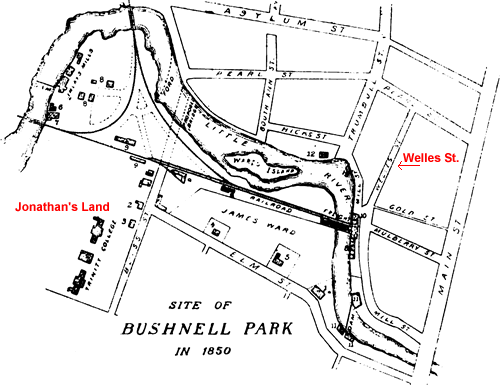 At a town meeting held June 6, 1646, an arrangement was approved whereby Jonathan would give his property to the city in exchange for the mill house just below the falls near the present Welles Street, along with a valuable site near the town's center near the public square (mouse over map on right). No record has been found to show that Jonathan actually operated the mill, but such was probably the fact. It is possible that this exchange did not occur, for Jonathan still owned the south part of the lot in 1659, when the town sold the north part with the school house to Joseph Smith.
At a town meeting held June 6, 1646, an arrangement was approved whereby Jonathan would give his property to the city in exchange for the mill house just below the falls near the present Welles Street, along with a valuable site near the town's center near the public square (mouse over map on right). No record has been found to show that Jonathan actually operated the mill, but such was probably the fact. It is possible that this exchange did not occur, for Jonathan still owned the south part of the lot in 1659, when the town sold the north part with the school house to Joseph Smith.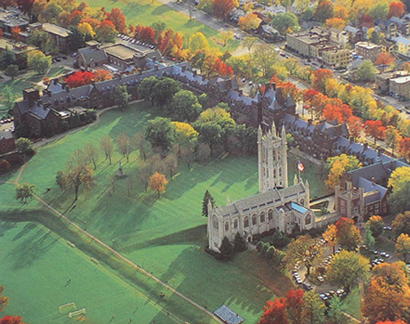 According to W.D. Love, in his book Colonial History of Hartford, in 1651, Jonathan, with three other men, acquired eighteen acres of woodland in the southern part of town, west of “Rocky Hill” (this is the ridge where the new campus of Trinity College was built, mouse over photo left for more info), and in 1653 the town voted that Jonathan would be allowed to build a warehouse at the common landing place in the little meadow next to Mr. Hooker's lot. He erected that building at once. “It was a two story building, had a cellar beneath it and a staircase leading to the second floor. Very likely Gilbert stored here the corn he collected in 1654 for the trainband. He had charge of the military stores for some years.” This achievement gave Jonathan a foothold at the center of the expanding trade and commerce of the town and colony upon the Great River. He profited even although his was not the only warehouse near the river. This building stood for at least fifty years.
According to W.D. Love, in his book Colonial History of Hartford, in 1651, Jonathan, with three other men, acquired eighteen acres of woodland in the southern part of town, west of “Rocky Hill” (this is the ridge where the new campus of Trinity College was built, mouse over photo left for more info), and in 1653 the town voted that Jonathan would be allowed to build a warehouse at the common landing place in the little meadow next to Mr. Hooker's lot. He erected that building at once. “It was a two story building, had a cellar beneath it and a staircase leading to the second floor. Very likely Gilbert stored here the corn he collected in 1654 for the trainband. He had charge of the military stores for some years.” This achievement gave Jonathan a foothold at the center of the expanding trade and commerce of the town and colony upon the Great River. He profited even although his was not the only warehouse near the river. This building stood for at least fifty years.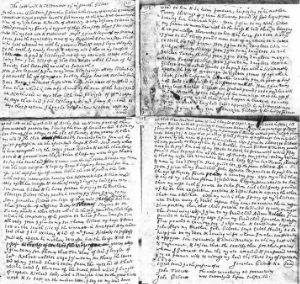
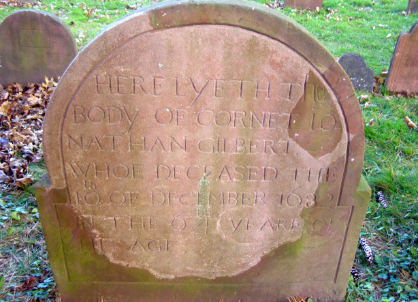 that 300 acres of Land I bought of Capt. Daniel Clarke in Farmington, also that purchase of Land I boughtof Massecup, comonly Called & known by the name of pagonchaumischaug; also, £50. I desire my wife do remember Hannah Kelly & give her 20s., and more at her discretion if she prove obedient. I give to my grand child, John Rosseter,£10; to my gr. child, Andrew Belcher, £5; to my gr. child, Jonathan Richeson, £5. I make my wife sole Executrix, and desire Capt. John Allyn, my brother John Gilbert, and Sargt. Caleb Standly to be helpful to her, and that she satisfy them for their pains.
that 300 acres of Land I bought of Capt. Daniel Clarke in Farmington, also that purchase of Land I boughtof Massecup, comonly Called & known by the name of pagonchaumischaug; also, £50. I desire my wife do remember Hannah Kelly & give her 20s., and more at her discretion if she prove obedient. I give to my grand child, John Rosseter,£10; to my gr. child, Andrew Belcher, £5; to my gr. child, Jonathan Richeson, £5. I make my wife sole Executrix, and desire Capt. John Allyn, my brother John Gilbert, and Sargt. Caleb Standly to be helpful to her, and that she satisfy them for their pains.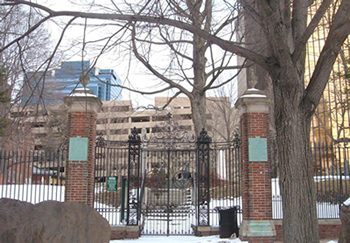 From all that can be learned of her, it would appear that she was a keen and practical woman with an eye to business. In this she was like her husband. The two were well mated and worked together for common ends and had common ambitions. After her husband died in 1682, she kept the Inn going for another 18 years with the help of her son Samuel.
From all that can be learned of her, it would appear that she was a keen and practical woman with an eye to business. In this she was like her husband. The two were well mated and worked together for common ends and had common ambitions. After her husband died in 1682, she kept the Inn going for another 18 years with the help of her son Samuel.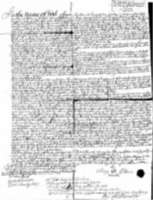


 Parrish records in Yardley show that Thomas married Elizabeth Bennett on August 29, 1610. They had seven children, see Elizabeth for details on the children. It is believed that they had a good life in Yardley, but about 1638 they left England and moved to America. This was during the reign of Charles I, a time of great religious and political turmoil that led to the English Civil War. Parliament had been dissolved for a decade and there was great resistance to taxation of the inland counties. (Mouse over image left.)
Parrish records in Yardley show that Thomas married Elizabeth Bennett on August 29, 1610. They had seven children, see Elizabeth for details on the children. It is believed that they had a good life in Yardley, but about 1638 they left England and moved to America. This was during the reign of Charles I, a time of great religious and political turmoil that led to the English Civil War. Parliament had been dissolved for a decade and there was great resistance to taxation of the inland counties. (Mouse over image left.)
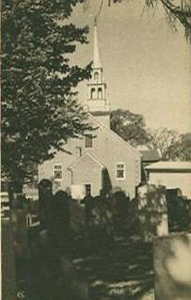 No other Bennetts are listed in or near this parish.Thomas and Elizabeth had eight children together whose baptismal records, for the most part, have been found in the Yardley parish — Thomas was baptized on February 16, 1611/12, married three times-his second wife Lydia was executed for Witchcraft in 1654; Sarah born about 1615, who has no baptism on record, but is in Thomas’ will, married her father's servant, Joel Jenkins, in 1640; ancestor Jonathan; John who was baptized on January 9, 1619/20-married Aymie Lord who was the sister of ancestor Dorothy Lord (note that per Ancestors of American Presidents, John and Aymie are ancestors of President Herbert Hoover); Ezekiel who was baptized on February 17, 1621/2; an unnamed infant who was buried in Yardley on November 3, 1624; Josiah baptized on November 27, 1625, married twice, first Elizabeth Belcher in 1651, and then Mary Harris Ward in 1687/8; and Obadiah who was baptized on June 7, 1629, married Elizabeth Burr Olmsted.
No other Bennetts are listed in or near this parish.Thomas and Elizabeth had eight children together whose baptismal records, for the most part, have been found in the Yardley parish — Thomas was baptized on February 16, 1611/12, married three times-his second wife Lydia was executed for Witchcraft in 1654; Sarah born about 1615, who has no baptism on record, but is in Thomas’ will, married her father's servant, Joel Jenkins, in 1640; ancestor Jonathan; John who was baptized on January 9, 1619/20-married Aymie Lord who was the sister of ancestor Dorothy Lord (note that per Ancestors of American Presidents, John and Aymie are ancestors of President Herbert Hoover); Ezekiel who was baptized on February 17, 1621/2; an unnamed infant who was buried in Yardley on November 3, 1624; Josiah baptized on November 27, 1625, married twice, first Elizabeth Belcher in 1651, and then Mary Harris Ward in 1687/8; and Obadiah who was baptized on June 7, 1629, married Elizabeth Burr Olmsted.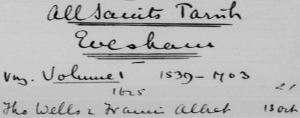
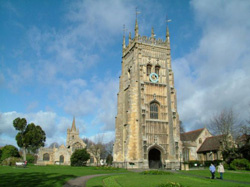 Thomas Wells wrote his will on February 9, 1637 (it is assumed to be 1637/8), probably just a few days before he died. In it, his father is still living, but not named, and he forgives him of a £5 debt and leaves him an additional £6; he leaves something to each of his surviving children, and he even left a contingency bequest in case his wife was pregnant. He goes on to leave money to people with the surnames of Wells and Albright, among others. The will is No. 145 in the Consistory Court of Worcester, 1637. The text of the will as published in volume 146 of The New England Historical and Genealogical Register in an article written by Douglas Richardson titled, The Widow Frances (Albright) Wells, Wife of Thomas Coleman of Wethersfield and Hadley, is as follows:
Thomas Wells wrote his will on February 9, 1637 (it is assumed to be 1637/8), probably just a few days before he died. In it, his father is still living, but not named, and he forgives him of a £5 debt and leaves him an additional £6; he leaves something to each of his surviving children, and he even left a contingency bequest in case his wife was pregnant. He goes on to leave money to people with the surnames of Wells and Albright, among others. The will is No. 145 in the Consistory Court of Worcester, 1637. The text of the will as published in volume 146 of The New England Historical and Genealogical Register in an article written by Douglas Richardson titled, The Widow Frances (Albright) Wells, Wife of Thomas Coleman of Wethersfield and Hadley, is as follows: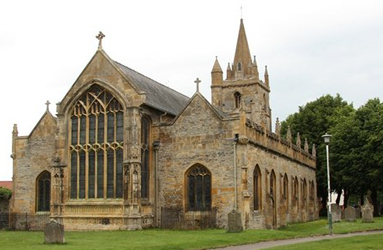 They had four children together all born in Evesham, but baptized in one of two churches, All Saints or St. Lawerence pictured right (mouse over image). These two churches are located immediately adjacent to each other in the center of the town of Evesham. This researcher has not been able to locate their children's christening records, but other researchers claim they have and are as follows – ancestor Mary; Thomas born about 1628, whose baptism record has not been found, married Mary Beardsley, and lived in Hadley, Hampshire County, Massachusetts; Sarah on February 10, 1632/3 in St. Lawrence, died at 3 years old and was buried in All Saints Churchyard on June 26, 1636; and John on February 20, 1635/6 in All Saints Church, married Sarah Curtis and lived in Hatfield, Hampshire, Massachusetts.
They had four children together all born in Evesham, but baptized in one of two churches, All Saints or St. Lawerence pictured right (mouse over image). These two churches are located immediately adjacent to each other in the center of the town of Evesham. This researcher has not been able to locate their children's christening records, but other researchers claim they have and are as follows – ancestor Mary; Thomas born about 1628, whose baptism record has not been found, married Mary Beardsley, and lived in Hadley, Hampshire County, Massachusetts; Sarah on February 10, 1632/3 in St. Lawrence, died at 3 years old and was buried in All Saints Churchyard on June 26, 1636; and John on February 20, 1635/6 in All Saints Church, married Sarah Curtis and lived in Hatfield, Hampshire, Massachusetts. 

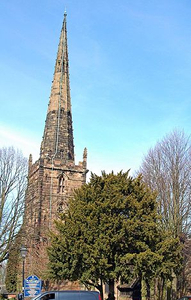
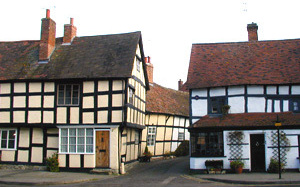 About 1592 Richard married a woman whose name is not known. Following their marriage, they lived in the parishes of Welford-on-Avon, Gloucesteshirer, England, and Alcester, Warwickshire, and had seven children. (Mouse over image left.) The first three children’s baptisms were recorded in Welford – Elizabeth on January 5, 1592/93, died at the age of 22 and was buried as a Mayden, on July 10, 1615 in Alcester; John on April 3, 1595, who married a woman named Joan, and lived into his 70’s; and Richard on November 6, 1597, who married Anne Kelbie, but sadly died about 40 years old. No baptismal record exists for ancestor Frances in either Welford or Alcester, so she may have been born on the road to Alcester. The last three children’s baptisms are recorded at St. Nicholas’ Church in Alcester – Anna, born on September 25, 1603 and buried there as Agnes only four months later on February 7, 1604; Ales or Alice on March 2, 1606/07, whose baptism record says she was a sonne, but in reality was a girl, and married Griffin Lowe; and Anne born on December 27, 1612, who was mentioned as unmarried at the age of 26, in her brother’s will. Alcester is about 7 miles west of Stratford on Avon where William Shakespeare was likely still living. The relationships of these folks areclearly laid out in their wills. Son Richard names his brothers John Albright and Griffin Low (who was married to Alice) and several of these same individuals were also named in the will of ancestor Thomas Wells, Francis’ husband.
About 1592 Richard married a woman whose name is not known. Following their marriage, they lived in the parishes of Welford-on-Avon, Gloucesteshirer, England, and Alcester, Warwickshire, and had seven children. (Mouse over image left.) The first three children’s baptisms were recorded in Welford – Elizabeth on January 5, 1592/93, died at the age of 22 and was buried as a Mayden, on July 10, 1615 in Alcester; John on April 3, 1595, who married a woman named Joan, and lived into his 70’s; and Richard on November 6, 1597, who married Anne Kelbie, but sadly died about 40 years old. No baptismal record exists for ancestor Frances in either Welford or Alcester, so she may have been born on the road to Alcester. The last three children’s baptisms are recorded at St. Nicholas’ Church in Alcester – Anna, born on September 25, 1603 and buried there as Agnes only four months later on February 7, 1604; Ales or Alice on March 2, 1606/07, whose baptism record says she was a sonne, but in reality was a girl, and married Griffin Lowe; and Anne born on December 27, 1612, who was mentioned as unmarried at the age of 26, in her brother’s will. Alcester is about 7 miles west of Stratford on Avon where William Shakespeare was likely still living. The relationships of these folks areclearly laid out in their wills. Son Richard names his brothers John Albright and Griffin Low (who was married to Alice) and several of these same individuals were also named in the will of ancestor Thomas Wells, Francis’ husband. 
